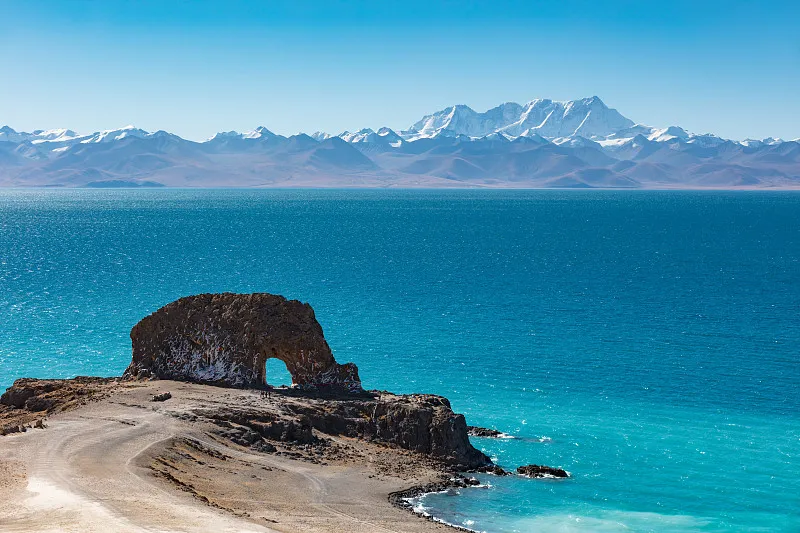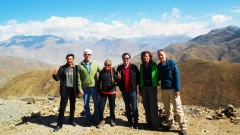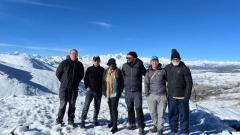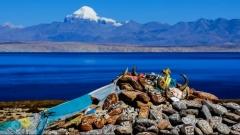Why Sun Exposure Is Severe at High Altitude
Understanding the reasons helps you prepare properly:
1. Stronger UV Radiation
UV intensity increases by about 10–12% for every 1,000 meters of elevation. In Tibet or the Pamirs, travelers may experience UV levels similar to tropical beaches—even when temperatures feel cool.
2. Snow and Glacier Reflection
Snowfields and glaciers can reflect up to 80% of UV rays, exposing travelers to sunlight from above and below. This is why glacier areas often cause quick sunburn or “snow blindness.”
3. Dry and Thin Air
Dry air dehydrates the skin quickly, making it easier to burn and crack. The lack of atmospheric moisture also reduces natural UV filtration.
4. Long Hours of Daylight
High-altitude regions often have long daylight periods, giving travelers more exposure even if they are not under direct sunlight.
Essential Sun Protection Gear
1. Sunscreen (SPF 50+ / PA++++)
A high-altitude sunscreen must meet these standards:
-
SPF 50 or higher
-
Broad-spectrum (UVA + UVB)
-
PA++++ recommended
-
Water- and sweat-resistant
-
Cream-based formulas work better in dry environments
Apply to:
-
face
-
ears
-
neck and back of neck
-
hands
-
lips (use lip balm with SPF)
-
underside of the chin (especially in snowy areas)
Reapply every 2–3 hours.
2. Sunglasses or Glacier Glasses
At high altitude, eye protection is as important as skin protection.
Look for:
-
UV400 protection
-
Polarized lenses
-
Side shields (or glacier glasses) in snowy/glacial regions
-
Large-frame sunglasses for full coverage
Symptoms of inadequate protection may include eye pain, tearing, or temporary “snow blindness.”
3. Sun Hats
A proper hat can reduce up to 50% of direct UV exposure on your face.
Ideal choices:
-
Wide-brimmed hats (7–10 cm brim)
-
Hats with neck flaps
-
Packable waterproof materials
-
Chin straps for windy plateau areas
Avoid small caps—they offer minimal protection.
4. Sun-Proof Clothing
Sun-protective clothing is extremely effective at high elevation.
Recommended items:
-
UPF 40–50 long-sleeve shirts
-
Breathable hiking pants
-
Lightweight windbreaker jackets
-
Neck gaiters or Buffs
-
UV-protective arm sleeves for drivers or cyclists
Dark colors—black, navy, olive—block more UV than light colors.
5. Face Masks or Sun Shields
A comfortable face mask helps:
-
protect from UV
-
prevent dryness
-
reduce cold wind burn
Especially useful for travelers riding motorcycles, bicycles, or open-air vehicles.
6. Lip Protection
At altitude, lips are often the first to burn and crack.
Choose:
-
SPF 30–50 lip balm
-
Thick balms with beeswax or shea butter
Reapply frequently, especially in windy areas.
7. Skin Moisturizers
Sun protection is not only about blocking rays—the dry air can rapidly damage your skin barrier.
Pack:
-
rich moisturizers
-
aloe vera gel for after-sun care
-
hydrating serums (hyaluronic acid)
-
repairing creams for windburn or redness
Apply at night to help the skin recover.
Situational Sun Protection Tips
Snow and Glacier Areas
-
Always wear sunglasses or glacier glasses
-
Apply sunscreen under the chin and inside the nostrils (reflection can burn these areas)
-
Cover all exposed skin
-
Wear a gaiter to protect against both UV and cold wind
High-Altitude Lakes (Namtso, Yamdrok, Karakul)
The combination of water reflection and strong UV requires:
-
SPF 50+ sunscreen
-
Hat + sunglasses
-
Long sleeves and long pants
Driving Long Distances
UV rays pass through car windows.
Drivers should wear:
-
UV arm sleeves
-
Sunglasses
-
Sunscreen on the left side of the face and arms
Hiking at High Altitude
Sweating reduces sunscreen effectiveness.
Tips:
-
reapply every 2 hours
-
wear UPF clothing
-
use a hat with a secure strap
-
carry a travel-size sunscreen
Common Mistakes to Avoid
-
Relying only on sunscreen but not UV clothing
-
Forgetting to protect lips, ears, and neck
-
Wearing light-colored thin fabrics that offer minimal UV protection
-
Not wearing sunglasses on overcast days (UV is still strong)
-
Ignoring after-sun care
-
Assuming cold weather means weak UV exposure
Remember: Cold air has nothing to do with UV intensity. Many travelers get the worst sunburns on cool, windy days.
Packing List: High-Altitude Sun Protection Essentials
-
SPF 50+/PA++++ sunscreen
-
SPF lip balm
-
UV400 sunglasses / glacier glasses
-
Wide-brimmed hat
-
UPF shirts & pants
-
Neck gaiter
-
Lightweight gloves (optional for wind)
-
Moisturizing cream
-
Aloe vera / after-sun treatment
-
Refillable water bottle (hydration helps skin recovery)
Conclusion
Sun protection in high-altitude regions is not just a matter of comfort—it is essential for health, safety, and an enjoyable travel experience. With strong UV radiation, dry air, and reflective snow surfaces, travelers need a smart combination of sunscreen, UV clothing, hats, sunglasses, and proper hydration.
Armed with the right gear, you can fully enjoy the beauty of the mountains, glaciers, and blue skies without worrying about sunburn or skin damage.












